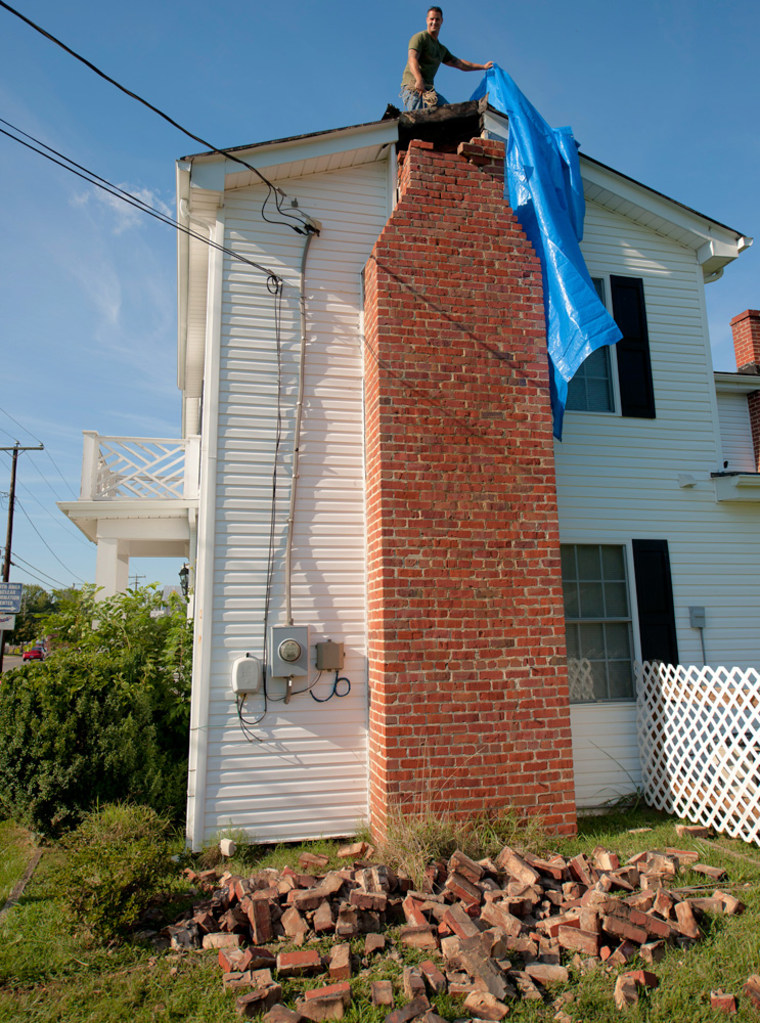Earthquakes and California go together. Or at least that's what most of the country thought until Tuesday's East Coast earthquake centered in Virginia.
Reports of the earth moving were widespread, coming from New York, Massachusetts, Vermont and Georgia. A few came from as far away as Chicago.
Although no immediate news of significant damage emerged, such a widespread impact raises questions about preparedness and insurance coverage.
That's particularly because earthquake damage is not covered under standard homeowners or business insurance policies.
These policies typically exclude damage from earth movement such as earthquakes and sinkholes, said Chris Hackett, director of personal lines policies for Property Casualty Insurers Association of America, a trade group. However, it is common for property insurance to cover a fire that might be the result of an earthquake. It's a good idea to read your policy and know the exclusions.
If you think that you'll never experience an earthquake, consider that about 5,000 earthquakes a year occur in the United States, according to the Insurance Information Institute. Quakes of various magnitudes have occurred in 39 states since 1900 and damage has been recorded in all 50 states. So although you might not be in a prime earthquake area, you're not immune.
Coverage for earthquake damages can be purchased as a rider to existing property insurance. Check to see if your insurer offers an earthquake damage rider. If not, you can shop around for a supplemental policy.
Although it's widely available, most property owners do not buy coverage.
Even in earthquake-prone California, just 12 percent of homeowners have policies, Hackett said. The national average is even lower.
The cost of earthquake insurance varies depending on your location, the type of building and its age. Older buildings cost more to insure as do those made of brick. Wood frame structures withstand quakes better, therefore cost less to insure.
A wood-frame home in Washington state might cost between $1 and $3 per $1,000 worth of coverage. While insurance may cost less than 50 cents per $1,000 on the East Coast, according to the III.
Insuring a brick home could cost from $3 to $15 per $1,000 in the Pacific Northwest and between 60 and 90 cents per $1,000 for coverage in New York.
Like other insurance policies, earthquake coverage carries a deductible. That means the homeowner must pay for portion of the damages before the insurance policy covers the rest.
Deductibles range from 2 percent to 20 percent of the replacement value of the structure. If a home costs $100,000 to rebuild, the homeowner would have to pay the first $2,000 for a 2 percent deductible.
States like Washington, Nevada and Utah, with higher-than-average earthquake risks, often have a 10 percent deductible. Property owners can often lower the annual premium by agreeing to a higher deductible.
Those who own a unit in a condominium can ask their insurer for earthquake coverage that would pay for losses if the building is damaged and the owners are asked to share in the cost of repair.
Renters also have options. They can buy coverage that will protect their personal property and pay for living expenses if their building were to be rendered uninhabitable.
Because earthquake damages can be so complete, it's important to keep an inventory of your belongings, especially of major appliances and furnishings. Many homeowners choose to make a video record of the rooms of their home, showing their furniture, televisions and appliances.
There is a bright spot that most drivers may not be aware of. Cars with comprehensive insurance policies are covered for damage from an earthquake.
It may seem like remote possibility, but be sure to review your coverage. Keep in mind that the most costly single earthquake in the U.S. was not in California, but centered in the Midwest near New Madrid, Mo. The 1812 quake measured 7.7 in magnitude and caused $100 billion in damage when measured in terms of current economic and demographic conditions.
